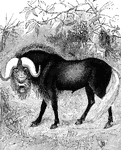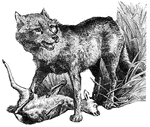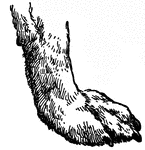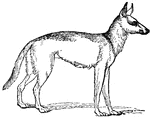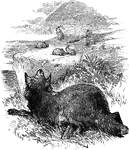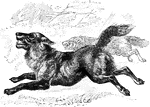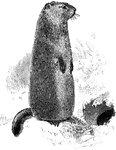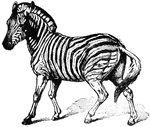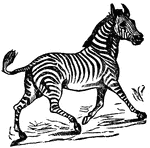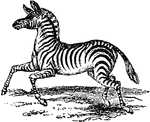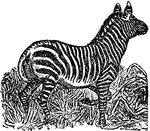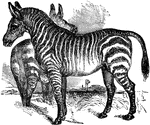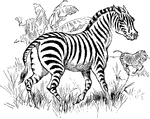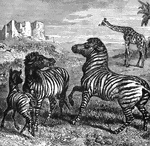The Mammals: T-Z ClipArt gallery contains 108 illustrations of mammals starting with the letters "T," "U," "V," "W," "X," "Y," and "Z" including: tapir, tatou, terrier, tiger, vicuna, walrus, weasel, whale, wolf, wolverine, wombat, woodchuck, yak, zebra, zebu, zemni, and zorilla.

Long-Finned Pilot Whale
The Long-Finned Pilot Whale (Globicephala melas) is a mammal in the Delphinidae family of oceanic dolphins.
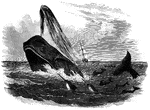
Sperm Whale
A sperm whale breaching up through the water. Its color is blackish above and white below.

Wildcat
The Wildcat (Felis silvestris), sometimes Wild Cat or Wild-cat, is a small felid native to Europe, the…
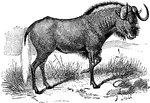
Black Wildebeest
The Black Wildebeest or White-tailed gnu (Connochaetes gnou) is an African mammal in the Bovidae family.

Wolf
The wolf belongs to the dog family. There are three recognized species of wolf and they are generally…
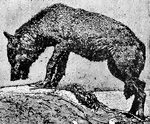
Wolf
"Wolf is the vernacular name of certain species of the genus Canis. The common wolf (C. lupus) has very…

Wolf
A quadruped of the genus canis, and closely allied to the dog, of which it is thought to be the progenitor.
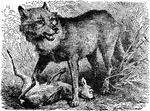
Wolf
The grey wolf or gray wolf (Canis lupus), also known as the timber wolf or simply wolf, is a mammal…
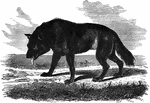
American Wolf
"The common wolf is of the size of a large dog; its usual color is a yelowish gray: the hair strong…
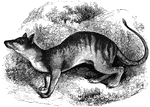
Tasmanian Wolf
"It is the size of a small wolf, with short, smooth, hair of dusky yellowish-brown color, barred on…

Wolverine
Wolverines can be found in North America. They are fierce short animals that will attack just about…
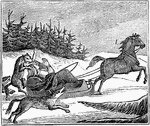
Wolves Attacking a Traveler
Wolves attacking a traveler. Caption below illustration: "The road now ran along the skirts of a pine…
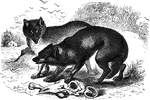
French Wolves
"The common wolf is of the size of a large dog; its usual color is a yelowish gray: the hair strong…
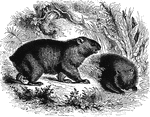
Wombat
"A short-legged, thickset animal, the body two feet long, the tail half an inch long. It lives in burrows…
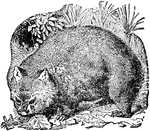
Wombat
An Australian marsupial, which somewhat resembles a small bear in appearance. The legs are short and…

Hairy Nosed Wombat
"The Wombat is a burrowing marsupial from Australia and Van Dieman's Land, and the islands of Bass'…
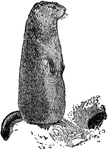
Woodchuck
An animal of the marmot family, which is native to the eastern part of North America, ranging from Alabama…
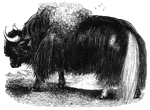
Yak
"The color of this animal in the wild and take, is black; the back and tail often white; the hair is…
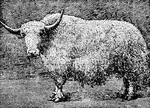
Yak
"Yak is a species of ox from the mountainous regions of Tibet. There are two races: the wild yak, generally…
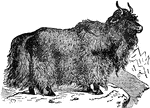
Yak
A bovine ruminant native to Central Asia. It is found chiefly in Tibet, and is regarded intermediate…
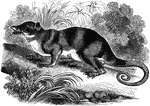
Yayock
"Resembles the otters, having palmated feet, and swimming with facility." — S. G. Goodrich, 1885
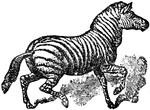
Zebra
An animal resembling the horse, and showing external characteristics found in the ass. It resembles…
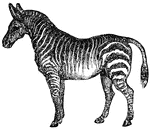
Zebra
A hoofed, herbivorous mammal found in Africa. It is known for its distinct and regular stripes of black…
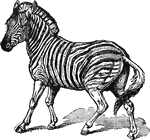
Burchell's Zebra
"Zebra is a popular name for any of the striped forms of the genus Equus; thus embracing the quagga,…
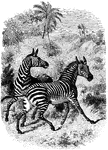
Zebras
"The ground color is white, or yellowish white, but the head, body, and legs to the hoofs are regularly…
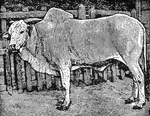
Zebu
"Zebu is the native name for any breed or individual of Bos Indicus. The zebus attain their greatest…
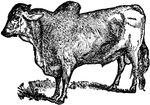
Zebu
A class of animals of the ox family, which are reared extensively from Japan to East Africa, but they…

Zemni
A blind mole rat native to the eastern regions of Europe and parts of Asia. Fur is soft and of a brown…
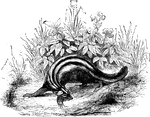
Zorilla
"Of this genus there is but a single species, found at the Cape of Good Hope and Senegal, and variously…
